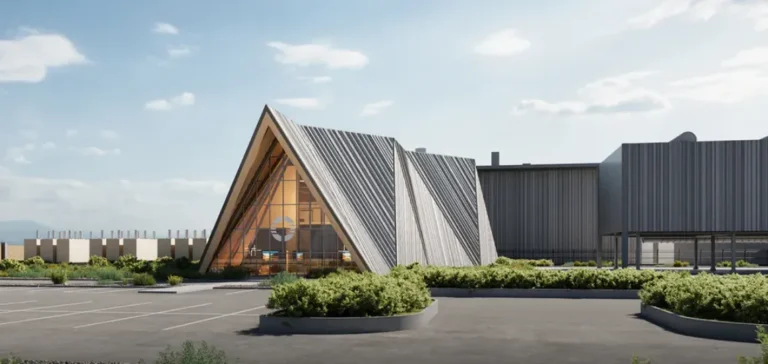American company Oklo has started construction of its first Aurora reactor at the Idaho National Laboratory site, in the presence of several political and industrial officials. The project, named Aurora-INL, is based on sodium-cooled fast reactor technology and marks a significant milestone in the federal government’s advanced reactor demonstration programme.
The Aurora-INL reactor builds on the legacy of the Experimental Breeder Reactor II (EBR-II), which operated from 1964 to 1994. It will use metallic fuel, including High-Assay Low-Enriched Uranium (HALEU), and may also be powered by recycled used fuel. The power unit will use heat pipes to transfer thermal energy to a supercritical carbon dioxide conversion system.
A project backed by the Department of Energy
The reactor is part of three projects selected by the United States Department of Energy under the Reactor Pilot Program, designed to accelerate the commercialisation of advanced reactors. The programme aims to demonstrate criticality in at least three pilot reactors by 4 July 2026. Oklo has been working on this project since 2019 in collaboration with the Department of Energy and the Idaho National Laboratory.
The Aurora project has also been authorised to use fuel recovered from EBR-II and has completed two of the four required steps to fabricate its reactor core at its Aurora Fuel Fabrication Facility (A3F), also located at the laboratory site.
A construction site backed by industrial partners
Kiewit Nuclear Solutions Co has been appointed as the lead contractor in charge of design, procurement, and construction. According to the United States Nuclear Regulatory Commission (NRC), the Aurora reactor will reach a maximum output of 75 MWe. A licence application was submitted as early as March 2020, but the process was suspended due to insufficient data. Oklo resumed pre-licensing activities with the agency in 2022 and plans to submit a new combined licence application later this year.
Site characterisation work was approved in November 2024. The company estimates the construction phase will create around 370 temporary jobs and between 70 and 80 skilled long-term positions for plant operations.
A political ecosystem mobilised around the project
The groundbreaking ceremony brought together several political figures, including the governors of Idaho and Utah, senators, federal representatives, and officials from the Nuclear Regulatory Commission and the Department of Energy. According to official statements, the Aurora project is positioned as an industrial solution to the anticipated rise in electricity demand driven by emerging technologies such as artificial intelligence.
The director of the Idaho National Laboratory stated that the project continues the site’s nuclear innovation legacy by supporting the transition from laboratory research to commercial deployment.






















